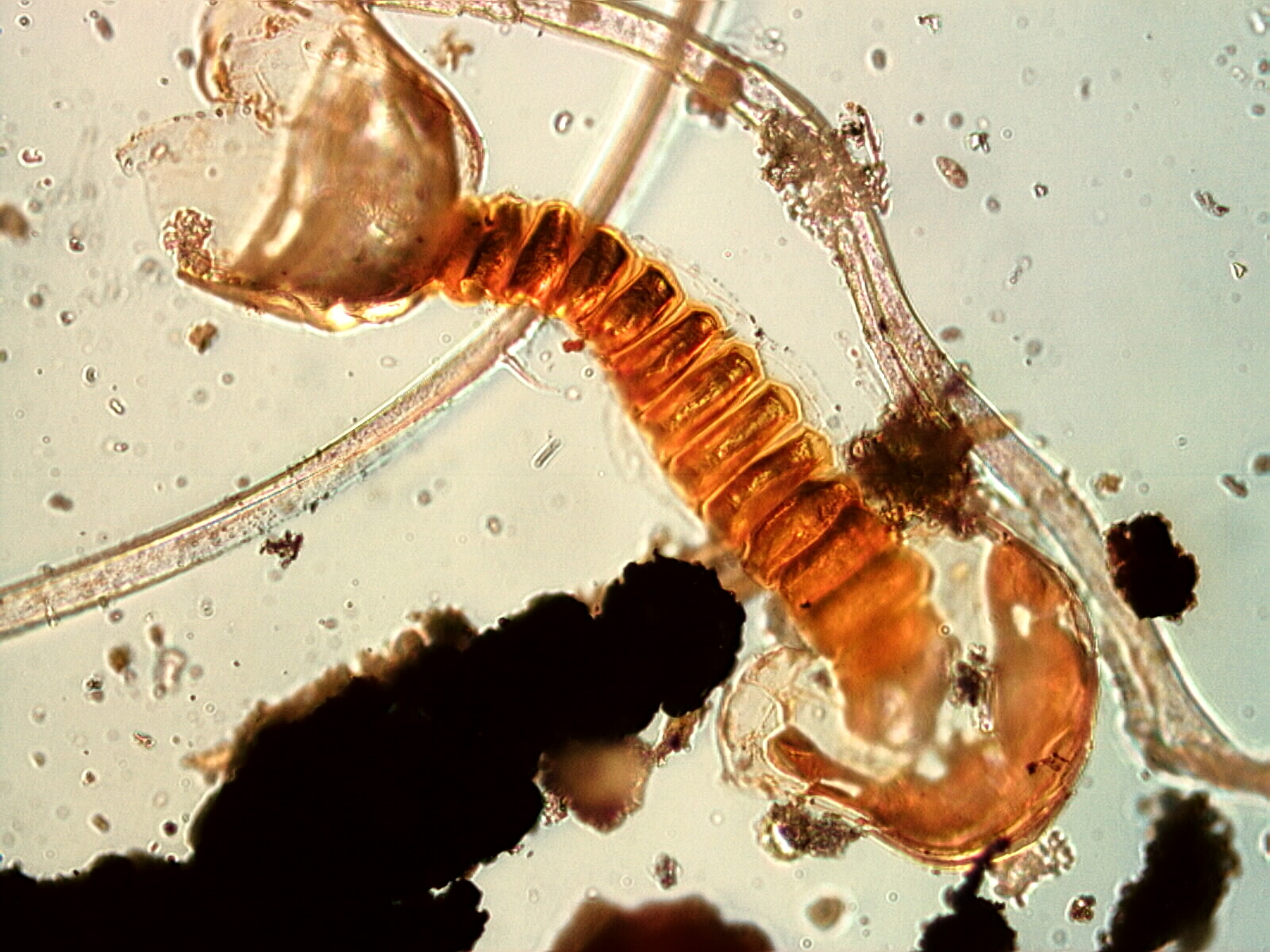Fern Sporangium
This field of view is from a tapelift collected in a home.
Sporangium are rarely present at
elevated levels in a home unless the sample is collected in the immediate vacinity
of a fern growing indoors. If
sporulating ferns are in the vacinity of the building then it is not unusual to see
some sporangium in the indoor sample.
Transmitted Off Crossed Circular Polarized Light
Definition/Function:
The sporangium is the capsule in which the fern spores mature and the mechanism that
then disperses them into the air.
The two ends of the sporangium form the "bag" in which the spores mature. The sporangium
is attached to the underside of
the fern leaflet initially. When the spores are mature the sporangium releases the
spores forcefully by snaping open.
Significance in the Environment:
The sporangium is part of the natural backgound at certain times of the year or may be
part of the building background
when ferns are grown indoors. The sporangium is not associated with health complaints
but may indicate a source of
fungal spores that may be in the sample. Ferns require a fair amount of moisture to
grow. When grown indoors the soil
in which they are planted can become a significant source of fungal spores. If these
fungal spores are present in the
sample it may be advisable to inspect the fern's potting soil. Fungal spores are a
potential allergen.
Characteristic Features:
The narrow redish/brown segmented body with well defined birefringence when viewed with
cross polarized light is characteristic
of fern sporangium. The birefringence is much higher than insect carapace and a bit
lower than most cellulosic plant parts.
The broad head and tail termination on the complete sporangium are also characteristic.
Associated Particles:
Sporangium are found with fern spores though fern spores may be present without
sporangium in the sample. Fern spores are
more mobile than sporangium. Pollens, fungal spores, moss spores, and other debris from
the outdoor environment are
typically associated with sporangium from outside the indoor environment. If the source
is indoors then fern spores will
be as common than pollen in the sample or even more so.
References:


